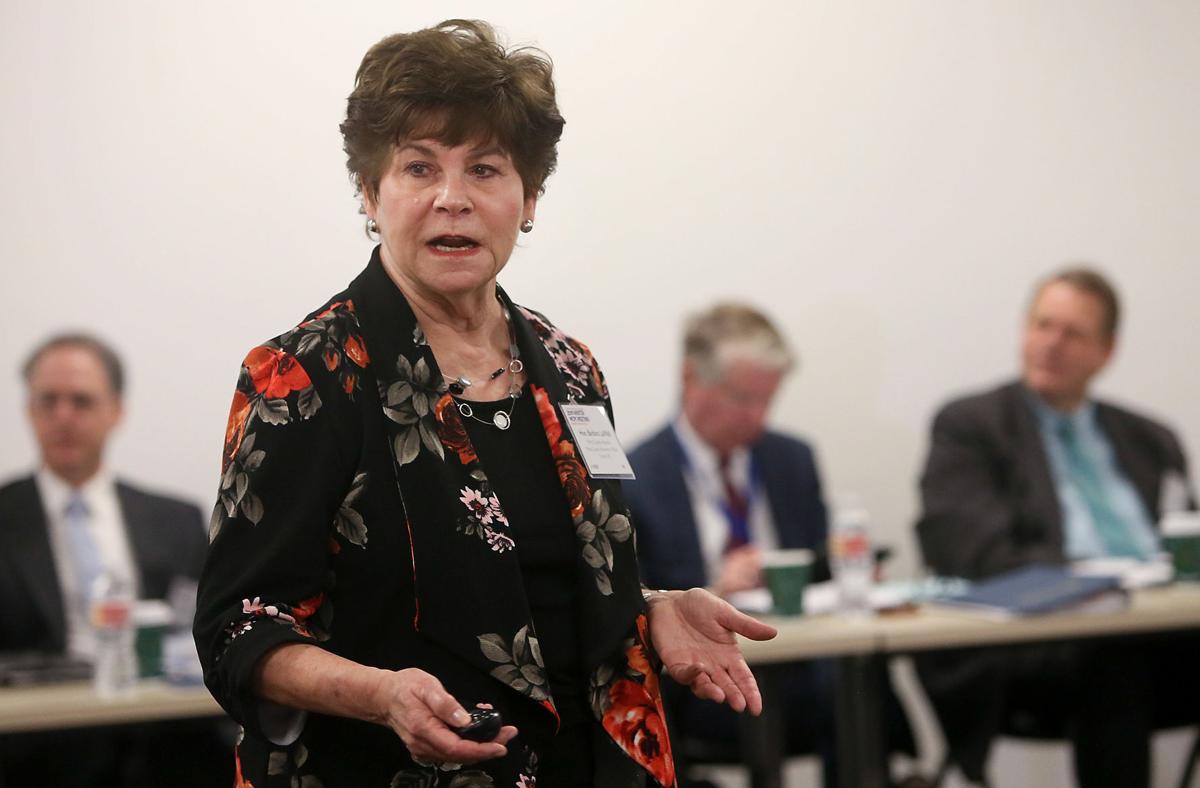PHOENIX — A lawsuit filed by Pima County Attorney Barbara LaWall along with a victim of domestic violence and two parents whose children were murdered seeks to keep a measure that would give judges more discretion in sentencing criminals from going to voters.
The Maricopa County Superior Court lawsuit claims the legally required 100-word description printed on the front page of the petitions is “thoroughly misleading.” It fails to inform would-be signers of key provisions, some of which might have deterred people from asking that the proposal be placed on the November ballot, attorney Brett Johnson said.
Roopali Desai, who represents the Second Chances, Rehabilitation and Public Safety Act, acknowledged that the explanation does not explain in detail each and every proposed change in the 10-page initiative. But that’s neither legally necessary, nor possible, given the 100-word limit, Desai said. What she said it’s designed to do is put would-be signers on notice of the general provisions. And at that point, Desai said, if they have questions they can refer to the actual language in the proposal which, by law, must be attached to each petition.
The initiative seeks to remove some of the restrictions that state lawmakers put on judges in 1978 amid concerns that some sentences were too lenient. Instead, judges would get more discretion in what the description says are “nondangerous offenses.”
“But the summary fails to explain that many of the so-called ‘non-dangerous offenses’ are, in fact, incredibly dangerous,” Johnson said. He said these include sex trafficking of children younger than 15, kidnapping, home invasion assaults, some forms of armed robbery “and even some types of attempted first degree murder.”
That definition, Johnson said, also applies to another provision in the initiative that allows those convicted of those non-dangerous offenses who complete certain programs while behind bars to get released after serving just half of their term. That creates an exception to the “truth in sentencing” laws dating back to 1993, which mandate that all convicted felons serve at least 85% of their sentence.
Desai denied there’s anything misleading about the description.
She pointed out that references to “non-dangerous offenses” in the description are followed by the parenthetical words “as defined.”
“So we said, if you want to know more about how it’s defined, go look at the language which, by the way, is attached to every petition,” Desai said.
Anyway, she said, there is already a state law that spells out what are dangerous offenses. That means everything else, by definition, is a non-dangerous offense.
Desai said it would be impractical to list in the initiative — and certainly in the description — every offense that falls into that category.
“You’re talking about potentially dozens if not hundreds of criminal code provisions,” she said.
That question of non-dangerous offenses isn’t the only issue.
Johnson also complains about verbiage in the description that says only that the initiative “amends two sentencing statutes.”
What it actually would do is alter a provision of state law that now lets prosecutors charge people who committed separate crimes on multiple days as repeat offenders, allowing them to seek enhanced sentences. Instead, the measure says the only way that could happen is if someone actually had been convicted of a separate offense before committing a new one.
“This omission is highly misleading because reasonable voters would be far less likely to sign the petition if they knew it would reduce the penalty for repetitive felony offenders,” Johnson wrote.
“By granting lenience to felony offenders for their third, fourth or fifth offenses (or more), the initiative does not provide felony offenders merely with ‘Second Chances’ (as the initiative’s title suggests),” he said. “It provides them with unlimited chances.”
Desai, for her part, said it would be “inaccurate” to say the initiative changes the law on “repetitive offenders.” Supporters of the measure instead see the language as simply saying what can — and cannot — be used as what it calls “a historical prior felony conviction” to allow for enhanced sentences.
And Desai said there is nothing misleading about simply saying in the description that the initiative “removes a requirement for eligibility under the earned release credit program.”
The problem with that, Johnson said, is that the removed requirement is functional literacy at the eighth grade level. He said that is something that signers would want to know.
No date has been set for a hearing. But the case needs to make it through the trial court and the likely Supreme Court appeal before the third week in August when ballots for the general election are set to go to the printer.
Other than LaWall, who is retiring at the end of the year, other plaintiffs are: Heather Grossman, a survivor of domestic violence who was left paralyzed when she was shot by someone hired by her former husband; Beckie Miller, whose son was robbed and murdered in 1991, prior to the “truth in sentencing” provisions. The lawsuit said none of the three perpetrators served more than three years in prison; and John Gillis, a former police officer, whose 23-year-old daughter was murdered in 1979 by a gang member who killed her as part of his initiation.





